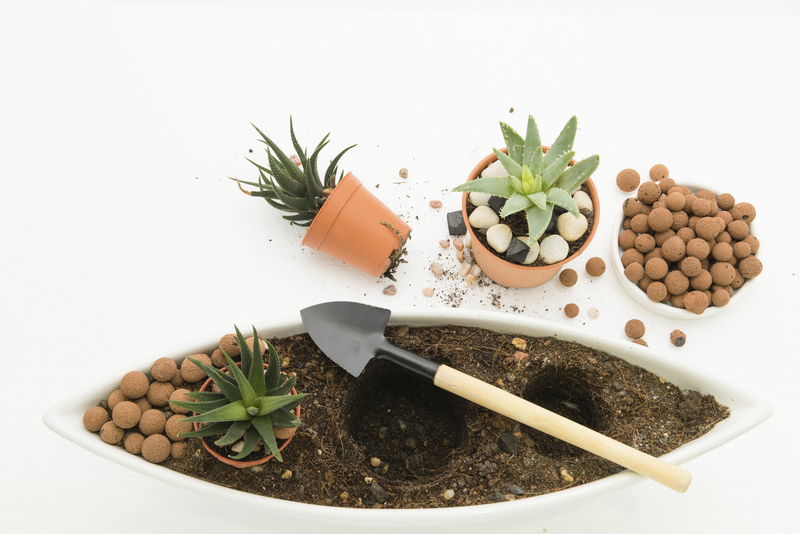The Rookie's Playbook: Insider Lawn Care Tips for a Flawless Green Space
Dreaming of that lush, verdant, envy-inducing lawn? You're not alone. Whether you've just bought your first home or are finally tackling the patchy stretch outside your apartment, understanding the art of lawn care is essential. This comprehensive guide will walk you through insider lawn maintenance tips, expert techniques, and secret weapons to help you create, enjoy, and sustain the ultimate green haven. If you're ready to transform your yard from "meh" to magnificent, read on!
Why Proper Lawn Care Matters: Beyond Just Green Grass
While a beautiful lawn is a point of pride, the benefits of flawless lawn upkeep extend much further:
- Boosts curb appeal and increases property value
- Creates a safe and enjoyable outdoor living space
- Enhances air quality and cools your home environment
- Reduces soil erosion and stormwater runoff
- Provides a natural habitat for beneficial insects and pollinators

Setting Up for Success: Know Your Lawn
Before diving into advanced lawn care strategies, it's crucial to understand your starting point:
1. Assess Your Soil Quality
Healthy soil is the foundation of a flawless lawn. Use a simple soil test kit to analyze pH and nutrient levels. Most grasses prefer a pH between 6.0 and 7.0. If your soil is too acidic or alkaline, amend it with lime or sulfur accordingly.
2. Identify Your Grass Type
Not all grasses are created equal! Common types include:
- Cool-season grasses: Kentucky Bluegrass, Ryegrass, Fescue
- Warm-season grasses: Bermuda, Zoysia, St. Augustine
Understanding your grass variety helps determine optimal mowing height, watering needs, and seasonal care routines.
The Rookie's Playbook: Essential Lawn Care Steps
Follow these proven steps for pristine lawn maintenance, tailored for beginners but effective at any skill level.
1. Mowing Techniques for a Healthier Lawn
- Follow the one-third rule: Never remove more than one-third of the grass blade height in a single mowing session.
- Maintain sharp blades: Dull blades tear, rather than cut, causing brown tips and vulnerability to disease.
- Change mowing patterns: Switch directions regularly to prevent soil compaction and encourage upright growth.
- Grasscycling: Leave clippings to decompose and return nutrients to the soil--a simple and eco-friendly hack.
2. Watering Wisdom: Hydration Done Right
- Deep and infrequent watering: Encourage deep root growth by watering less frequently but more thoroughly (typically 1 inch per week).
- Water early in the morning: This minimizes evaporation and prevents fungal diseases.
- Watch for drought stress: Grass blades that wilt or change color are asking for more moisture.
3. Fertilizing: Feeding for Flawless Greenery
Use a slow-release, balanced fertilizer formulated for your grass type. Fertilize in early spring and fall for cool-season grasses, and late spring to summer for warm-season varieties.
- Apply evenly and avoid over-fertilizing, which can burn grass and promote weeds.
- Always follow the product's instructions to avoid runoff and pollution.
4. Aeration: Giving Roots Room to Breathe
Aerate your lawn at least once a year, preferably in the growing season. Aeration alleviates soil compaction, improves water and nutrient absorption, and encourages robust root growth.
5. Overseeding for a Dense Lawn
Patchy lawns benefit from overseeding (spreading new grass seed over existing turf). Pair with aeration for best results. This technique introduces new, resilient grasses that crowd out weeds and increase turf thickness.
Dealing with Common Lawn Troubles
1. Weed Control: Outsmart the Invaders
- Manual removal: Address broadleaf weeds with a trowel or hand weeder.
- Pre-emergent herbicides: Stop weeds before they start, especially crabgrass, by applying products in early spring.
- Healthy lawn practices: Thick, well-fed lawns naturally crowd out most weed species.
2. Thatch Management: Don't Let It Build Up
Thatch is a layer of dead grass and roots that blocks air and water. A light layer is normal, but anything over half an inch can cause problems. Dethatch with a rake or machine in early spring.
3. Pest and Disease Defense
Look for brown patches, chewed blades, or unusual wilting. Use targeted treatments and avoid overwatering, which encourages disease. Whenever possible, opt for organic lawn care solutions to protect pollinators and pets.
Advanced Insider Lawn Care Hacks for Green Space Perfection
1. Using Mulch and Compost
Mulching grass clippings and adding organic compost boosts soil health. Compost introduces beneficial microbes and improves structure, ensuring your lawn's vibrant appearance is built on a solid, natural foundation.
2. Regular Edging for Sharp Borders
Keep garden beds and walkways tidy by cutting clean edges along your lawn. Not only does this improve aesthetics, but it also prevents invasive grass from sneaking into other areas.
3. Smart Technology for Modern Lawn Lovers
Consider investing in smart irrigation systems that adjust watering schedules based on weather data. Robotic mowers and soil sensors are also game changers for hassle-free, high-tech lawn care routines.
4. Embrace Sustainable Lawn Care Techniques
- Choose drought-tolerant grass species to conserve water
- Minimize chemical inputs with organic fertilizers and pest control
- Encourage biodiversity by integrating native plants and wildflowers along borders
Seasonal Lawn Care Guide
Every season presents new challenges and opportunities for proactive care. Here are tailored lawn care tips for every part of the year:
Spring Lawn Survival Strategies
- Rake up winter debris and check for snow mold
- Apply a light fertilizer and pre-emergent weed control
- Aerate if the soil is compacted
- Overseed thin areas to jumpstart growth
Summer Lawn Maintenance Musts
- Raise your mower height to shade roots and retain moisture
- Water early, deeply, and less often
- Monitor for pests like grubs and treat active infestations
- Avoid heavy fertilization, which can stress grass in heat
Fall Lawn Renovation Routines
- Aerate and fertilize to restore nutrients lost over summer
- Continue to mow until growth stops, keeping the grass a bit higher than usual
- Rake leaves promptly to avoid suffocation and fungal growth
- Overseed and patch bare spots for a head start next spring
Winter Preparation Pointers
- Give a final mow, reducing blade height slightly
- Clear lawn of debris, toys, and furniture that can harm dormant grass
- Apply winterizing fertilizer especially for cool-season lawns
Tools and Supplies: The Rookie's Starter Kit
Equip yourself with the right gear for efficient and effective lawn maintenance. Here's a checklist of essentials:
- Lawn mower: Choose from push, self-propelled, or electric models depending on lawn size
- String trimmer: For edging and hard-to-reach areas
- Garden hose and sprinkler: Ensure even coverage for watering
- Soil test kit: For periodic checks on soil health
- Rake and dethatcher: Remove thatch and autumn leaves
- Seed spreader: Essential for overseeding and fertilizer application
- Aerator: Manual or machine, depending on yard size
Pro tip: Store all tools in a dry, accessible area and perform seasonal maintenance to prolong their life.
Insider Advice: Mistakes to Avoid for a Flawless Lawn
Even seasoned lawn lovers fall into traps. Steer clear of these common pitfalls for great results:
- Scalping the grass: Cutting too short shocks roots and invites weeds
- Overwatering: Promotes fungal disease and thatch
- Ignoring soil health: Failing to test and amend leads to slow, patchy growth
- Improper timing: Fertilizing, mowing, or seeding at the wrong time wastes effort and invites trouble

Expert Q&A: Lawn Care Myths Busted
Myth 1: More fertilizer means greener lawns
Truth: Over-fertilization can burn grass and cause excessive thatch. Stick to recommended rates for your lawn's specific grass type.
Myth 2: All weeds are harmful
Truth: Some weeds, like clover, can fix nitrogen and actually benefit the lawn. Control only those that are aggressive or unsightly.
Myth 3: Bagging grass clippings is always better
Truth: Leaving clippings (grasscycling) returns essential nutrients to the soil and helps retain moisture. Bag only when the lawn is thick with weeds or disease.
Conclusion: Achieve Your Flawless Green Space
Crafting the perfect yard doesn't require endless hours, just smart strategies and a commitment to mastering the basics. With the insider tips, rookie secrets, and advanced tricks included in your new playbook for lawn care, your journey toward a flawless green space starts today. Remember, consistency, observation, and a little insider know-how are the keys to lawn care greatness.
Ready to step onto your own lush green carpet? Grab your gear, follow this playbook, and watch your lawn become the neighborhood's crown jewel!
```